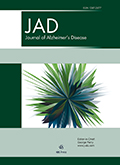Authors: Elghanam, Yomna | Purja, Sujata | Kim, Eun Young
Article Type:
Research Article
Abstract:
Background: Alzheimer’s disease (AD) is a neurodegenerative disease that imposes economic and societal burden. Biomarkers have played a crucial role in the recent approval of aducanumab and lecanemab as disease-modifying therapies which marked a significant milestone for the treatment of AD. The inclusion of biomarkers in AD trials facilitates precise diagnosis, monitors safety, demonstrates target engagement, and supports disease modification. Objective: This study analyzed the utilization state and trends of biomarkers as endpoints in AD trials. Methods: In this retrospective study, trials were collected by searching clinicaltrials.gov using the term “Alzheimer”. Primary and
…secondary outcomes were analyzed separately for each phase. Results: Among the 1,048 analyzed trials, 313 (29.87%) adopted biomarkers as primary endpoints and 364 (34.73%) as secondary endpoints, mainly in phases 1 and 2. The top three biomarkers adopted as primary endpoints in phases 1, 2, and 3 were amyloid-PET, tau-PET, and MRI. The top three biomarkers adopted as secondary endpoints, in phase 1, were cerebrospinal fluid (CSF) amyloid-β (Aβ), blood Aβ and amyloid-PET; in phase 2, they were MRI, CSF Aβ, and CSF phospho-tau; and in phase 3, they were amyloid PET, MRI, and blood Aβ. There was a statistically significant increase in the adoption of biomarkers as primary endpoints in phase 2 trials (p = 0.001) and secondary endpoints in phase 3 trials (p = 0.001). Conclusions: The growing recognition of the importance of biomarkers in AD trial’ design and drug development is evident by the significant steady increase in biomarkers’ utilization in phases 2 and 3.
Show more
Keywords: Alzheimer’s disease, amyloid, biomarkers, clinical trials, drug development, endpoint, tau
DOI: 10.3233/JAD-240008
Citation: Journal of Alzheimer's Disease,
vol. Pre-press, no. Pre-press, pp. 1-11, 2024
Price: EUR 27.50





